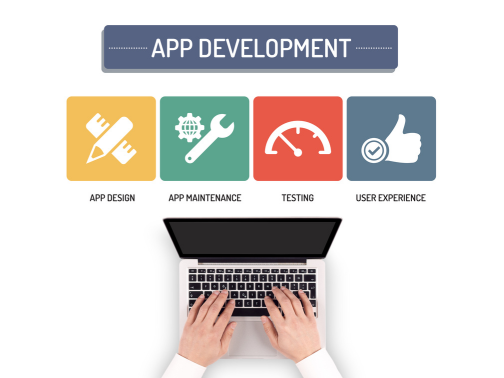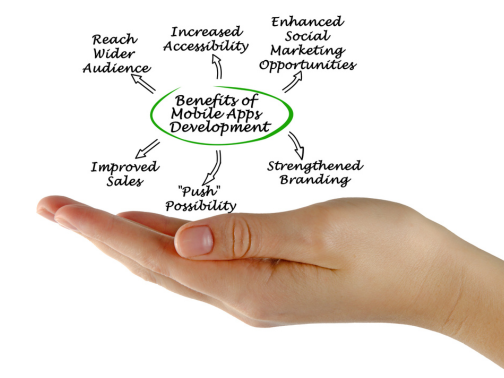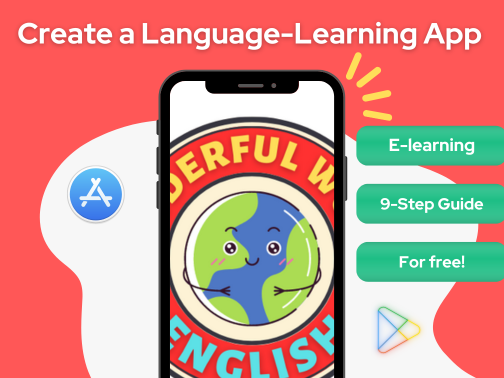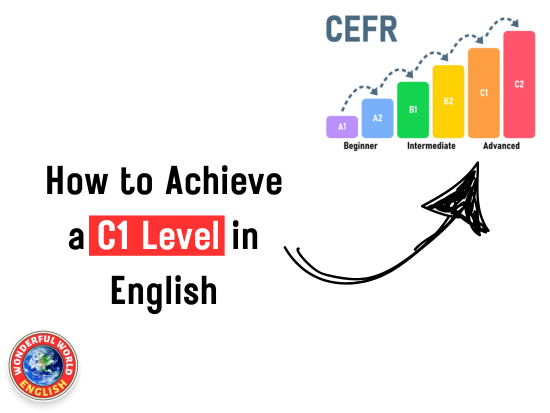Contents
Toggle
Meet Beenish Aslam, an accomplished MPhil scholar, and writer at Wonderful World English. Beenish has a wealth of experience in education, and we sought out her expertise to provide fresh insights into this dynamic world.
In this digital age, E-learning applications have swiftly become the new teachers in the educational world.
Several types of E-learning apps exist depending on the goals of the learner.
Due to their usability, value, and convenience, they are excellent tools that can complement anyone’s educational journey.
The giant field of language learning is no exception, with millions of users around the world downloading and using such apps every day.
The primary goal of language learning apps is to make education available on smartphones and personal computers.
They allow the learners to manage their schedule and learning pace without getting overburdened or pressured.
Learning how to create a language-learning app can elevate us to new heights and is an excellent idea for anyone willing to do the work.
But how are these apps made, and can you make one for your school or brand?
To create a language learning app from scratch, it is essential to establish a description and purpose. Then, a business analysis will be required before conceptualizing the app’s design and user interface. Creating accurate and relevant material for the app is another crucial step before the developmental phase.
I am an experienced educational researcher whose goal is to provide unique insights into the world of language learning.
If you are thinking of making a language-learning app, or are simply curious, you’re in the right place!
This guide will discuss some helpful insights to create a successful and user-friendly language-learning app.
We can divide the app development process into nine key steps.
Some of these steps work simultaneously as they speed up the launch time for the application.
So, without further adieu, let’s discuss these steps individually to make it easier for you to understand.

How to Create a Language-Learning App
It should go without saying, that creating a language-learning app is no walk in the park.
It requires patience, dedication, planning, and execution before anyone can expect to see good results.
It can be a very fruitful venture and may be an excellent option for anyone who follows the steps meticulously.
If you are looking to develop a language-learning app now or are planning to do so in the future, this guide will help you understand the process and requirements.
Anyone reading this is likely interested in the world of English as a Second Language (ESL).
There is a huge demand around the world for ESL teachers; find out why it can be an excellent career choice right here.
Below are the nine key steps on how to create a language-learning app:
1. Develop a Clear Description and Purpose
First and foremost, it is crucial to establish a concept for your new language-learning app.
Before starting to work on the app design, ensure you have a clear description and idea of exactly what you want it to achieve.
The app’s concept means what it will do at a functional level and how it will appear.
For instance, your concept will determine how the app will respond to user interactions and the elements and features it will have once it gets launched successfully.
You should know the demographic of the users of the app.
Is it aimed at adults or young learners?
Will it target a specific region or group of English language learners?
Think about these elements and note everything down.
It is recommended to start writing the concept of your language learning app in the form of a concise statement.
Your concept statement must answer basic questions such as the what, where, how, and when, etc.
The purpose doesn’t have to be complicated – the easier, the better.
If it’s longer than two sentences, it means that it’s too confusing even for you and not targeted enough.
I’m sure you’ve heard about Candy Crush – one of the most popular gaming apps, which revenue in 2020 was $1190 mln. The purpose of the app was simple: to entertain.
Pagepro.co
Grammar is an essential component of language learning.
Whether for inspiration or just out of curiosity, check out the guide below to discover the top 10 best English grammar-learning apps on the market today!
Related Article: Which is the Best App for Learning English Grammar? – Top 10

2. Undergo a Business Analysis
The business analysis will let your software vendor understand your vision correctly.
It allows your vendor to understand and assess your requirements and analyze the probability of their implementation.
Doing business analysis will also help you understand your own preferences.
Undergoing business analysis includes the actual discovery phase of your desired app.
If you are unclear about your project’s concept, description, or overall scope, an outsourcing team will help you determine the problems and their potential solutions.
During the phase of business analysis, you need to cater to the following aspects:
- Check the authenticity and relevance of your project.
- Validate the feasibility of all the functional areas.
- Undergo extensive research and analyze the market thoroughly.
- Gather data about the potential competitors.
- Define your business goals clearly.
For a list of the top 15 best mobile app development companies, click here.
3. Make a List of the App’s Features
You need to make up a list of application features along with a development team.
When deciding on the feature set for your app, you need to ensure you don’t end up adding too many features that will overwhelm your users.
You need to be very careful because adding a large number of features can confuse app usage and result in bad reviews and fewer users.
It is recommended to stick with the mantra of “simplicity is king.”
Go for a simple interface that is not overloaded with features.
It makes the app usage easy for language learners, and including elements such as a reward system is a great way to keep users engaged and motivated to continue using the app.
After successfully defining the feature set, make a list of requirements for your development team.
By looking at your requirements list, the development team will tell you about the tools required to execute your ideas and the amount of resources required to meet the desired outcome.
To find out how to build an app development team, click here.

4. Select the Technology Stack Corresponding to the Platform (Web, iOS, Android)
According to research, around 80 percent of online learners use smartphones to learn, while 57 percent use multiple devices, so developers need to generate their projects across different platforms.
This is what the current most popular language-learning apps do, from Duolingo to Memrise.
To reach the largest audience and attract more users, ensure that your app will be available on Google Play, Apple Store, and the web.
Doing this will be more expensive, however.
To code your language learning app, ask your developers to choose the technology stack.
The technology stack will depend on your chosen platform/s.
5. Design the App
An application where all the elements work well together will make it an intuitive and convenient tool for its users.
The app development team must consider the functional and external consistency of the application.
Functional consistency means that all the functions available in the application work in a similar pattern, making it simple to navigate and attractive to the eye.
Users should be able to easily access the learning material from their smartphones, laptops, and tablets without being troubled and confused.
The design needs to be similar across all devices, and this can be done by ensuring functional and external consistency across multiple platforms.
Make sure to keep the design simple and appealing to the eye, and you will be well on your way to producing a popular language-learning app.
To see some of the best app designs of 2023, click here.

6. Generate Valuable Content
After developing a clear vision and sorting out all the technical details of the application, you are ready to add content.
Usually, the content will be uploaded parallel to the design stage.
Content is the most important aspect of any application and should be engaging, informative, and applicable.
Ensure that your content is 100 percent correct, updated, and relevant to the user’s needs.
It should be captivating enough to engage the user and encourage them to keep coming back for more.
It’s very important to reiterate, there should be no mistakes in the study material.
It is recommended to take guidance from professional language teachers to ensure the best quality content.
Most running language learning platforms collaborate with professional teachers and educationists to create the content.
Professional language teachers can help you develop an effective curriculum for learners of all ages and backgrounds.
Upwork can be a great place to start looking for experienced language educators who can help with course and content creation.
7. Develop the App
After sorting out the desired design details, it is time to pass the design layout created by a graphic designer.
After passing the design, it is time to develop the app’s front and back end.
The front end is what users see and interact with and the backend is how everything works.
Geeksforgeeks.org
You need to develop the front end where the user inputs are received, and relevant answers are supplied after processing.
The actual processing takes place at the back end.
For instance, when a user types a request, it is sent to the back end, where the algorithm will determine what to do next.
A variety of necessary technology is available to accomplish this in the developmental stage.
The choice again depends on the complexity of the project and the platform.
Important tip: Selecting a modular structure for the app is recommended.
This is especially recommended if you aim to expand on the app’s courses in the future, as this can be achieved without spending a lot more every time.
Click here to hire an experienced and acclaimed app developer.

8. Quality Assurance and Testing
You need to apply quality assurance (QA) right from the beginning.
QA is essential to identify weaknesses and eliminate bugs, increasing application quality and usability.
If you use the right testing approach, you can generate a bug-free, stable app.
You usually need to apply both functional and non-functional testing.
Functional testing includes smoke, sanity, regression, etc., while non-functional testing includes performance and security.
QA engineers test the mobile app behavior under certain performance requirements. In particular, an app should handle a huge number of users or database server removal. QA specialists ensure an app works under different although expected load conditions. They determine whether the app supports a minimum, average, and peak user levels with the appropriate network coverage.
QAmadness.com
After creating the beta version of your product, you can also conduct a focus group testing so that you can see the mistakes and errors.
Use the QA resources efficiently to reduce the cost of the software without compromising the quality.
9. Launch Marketing
A huge congratulations to anyone who makes it to this stage.
Once you have a well-functioning, complete app you are happy with, it’s time to market it to potential users.
In order to boost downloads, it’s essential to run advertising campaigns and promote the app to the relevant target audience.
You must have an in-house or outsourcing team to promote your venture.
If you haven’t already, click here for some insights to help you find out whether an in-house or outsourcing team is best for you.
Make sure to indulge in marketing campaigns consistently and across several platforms.
You can even start marketing when the development is still in process.
Here are a few valuable suggestions to promote a language-learning app:
- Generate a landing page.
- Start a website/blog to funnel traffic to your app.
- Use social media to promote your app.
- Push for reviews on the app store.
- Create an introductory video.
- .Create a user’s community.

Factors Affecting the Cost of E-Learning Development
It’s important to note that making an app can be a costly venture.
Spdload.com
App Type Estimate Cost Time Simple App Development $40,000 to $60,000 2-3 months Basic App Development $60,000 to $150,000 3-6 months Complex App Development from $300,000 9+ months
Following are some of the most common factors affecting the cost of E-learning development.
You need to consider them if you want to allocate and manage your budget systematically:
- The Complexity of the Feature Set: A simple app with standard features is much cheaper as compared to a fame-based E-learning app.
- Supported Platforms: An app that runs only on Android is cheaper than one that runs on Android and iOS.
- Developer Expertise: The expertise of the developer significantly impacts cost-effectiveness. The experts have some pre-made code snippets that can help in cost minimization.
- Developer Location: You need to consider the developer’s location as it greatly impacts the overall budget for the project.

Conclusion
We hope this guide has been useful and provided valuable insights into creating an app for language learners.
Remember that there is no real need to create clones of already developed and functioning apps because they already have huge reputations.
It’s far better to identify remaining gaps in the market and create solutions for them, and of course, you can take inspiration from existing, other successful language-learning apps.
By identifying areas where you can bring value, your app and brand will be far more likely to succeed in a competitive market.
Start by identifying your concept and list your requirements to develop your project from scratch.
Get an expert team to deal with technicalities such as technology stack based on your desired platform.
Choose a simple and user-friendly design so that learners don’t get confused.
Remember that it is better to select a modular design so that you can add the courses in the future without any fear of extra budget.
There you have it, folks.
Everything in this guide is designed to help you better understand how to create a language-learning app from scratch, and we hope you find value here.
Have a wonderful day!
Image Attribution: All images licensed via canva.com






